This post is the one I wrote but seem to have failed to send yesterday, 17th February 2017.
CLICK ON IMAGES TO ENLARGE. THOSE IN THE LARGE GROUPS ACCESS A GALLERY THAT CAN BE VIEWED FULL SIZE.
Yesterday evening Jackie, Elizabeth and I visited Southampton City Art Gallery for a preview of:
|
17 February to 22 April 2017
An exhibition of paintings by Hilda Margery Clarke to celebrate her 90th year. She was born in Manchester and learnt to paint through the guidance of L. S. Lowry, with whom she remained life-long friends until his death in 1976. She moved to Southampton in 1954, and studied drawing under the excellent tuition of Peter Folkes at Southampton Art College. Since 1965, Clarke has exhibited locally and in London, and remained an important part of the city’s art scene. In 1984, she established “The First” Gallery in her Bitterne home, consolidating ten earlier annual mixed shows there, as a venue to support other serious artists, only latterly promoting her own work.
Her subject matter includes the world around us and beyond, glimpsed and imagined, interpreted with compassion and warm humour, evident in her interest in people. The exhibition will be accompanied by a small display of works from the collection by artists that have inspired Clarke, including L. S. Lowry, Richard Eurich and Eric Meadus.
|
Most of you will know by now that the artist is our dear friend Margery, some of whose work has already featured on this blog.

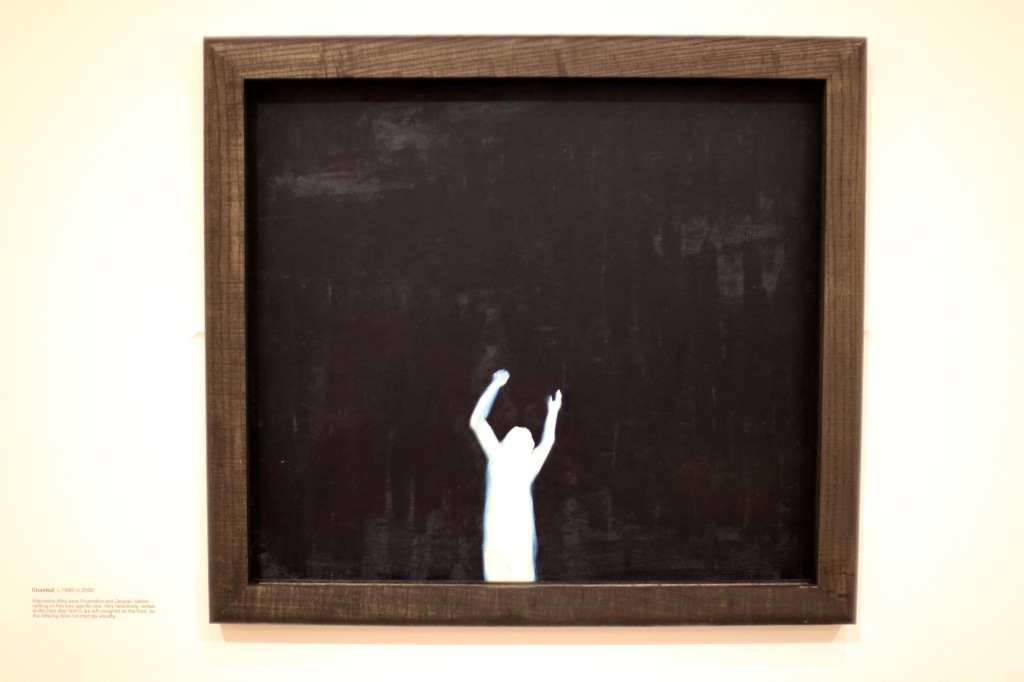


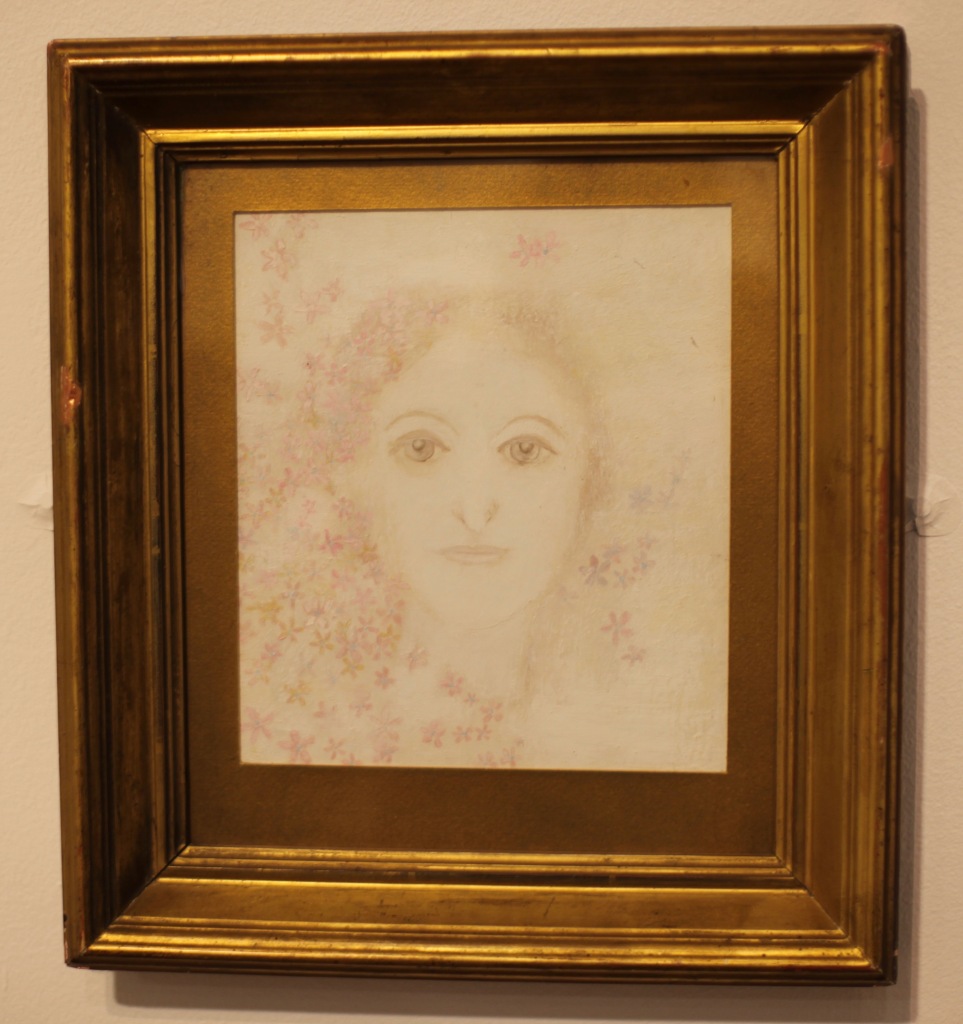

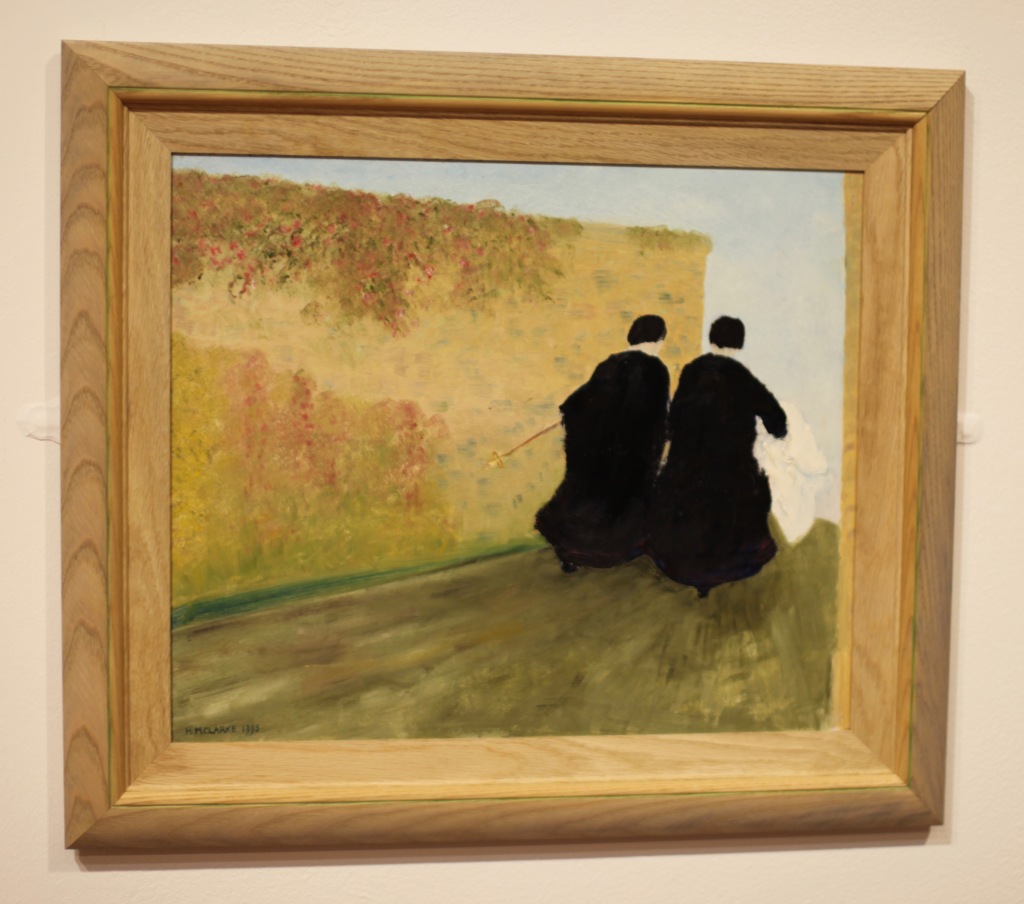
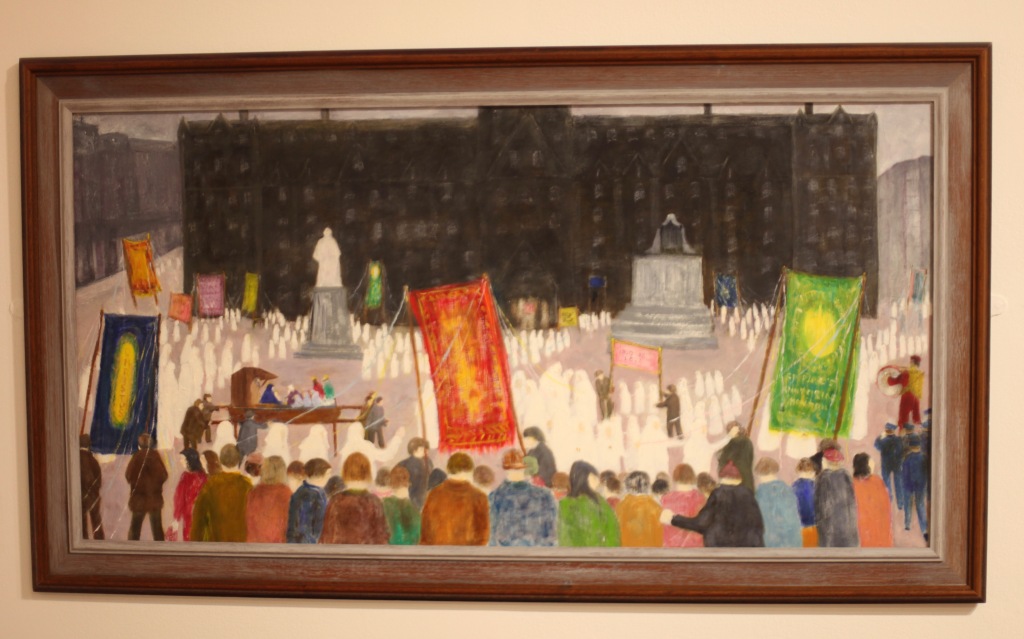
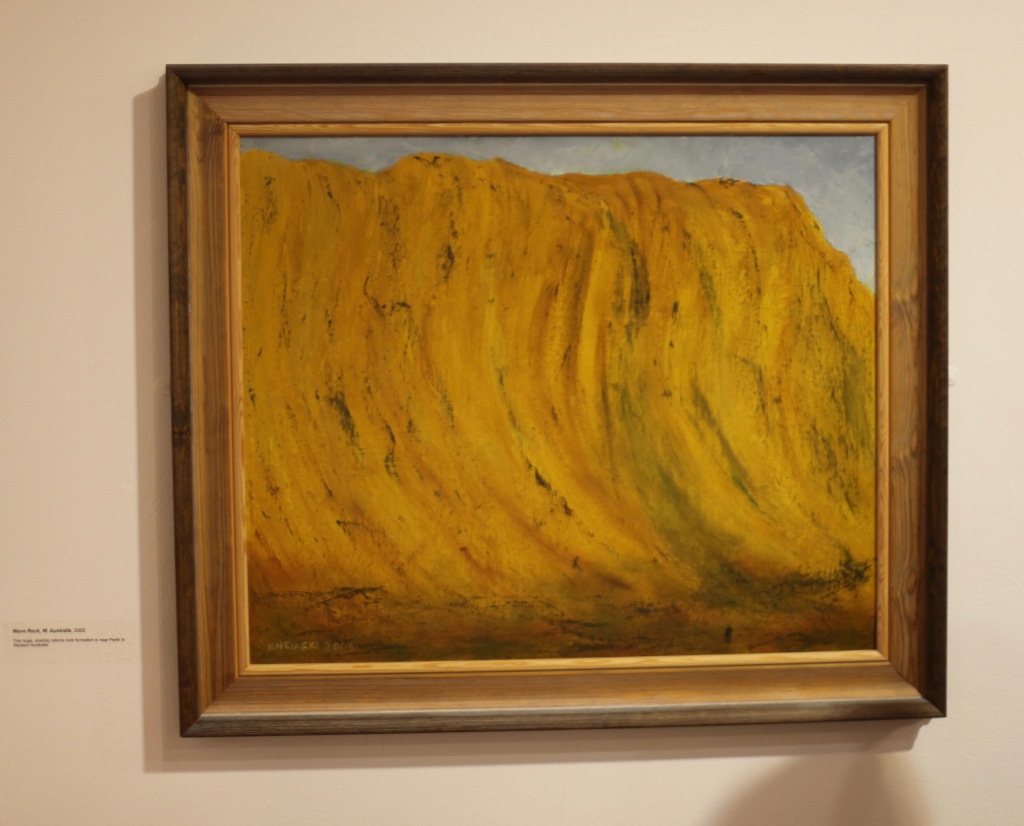
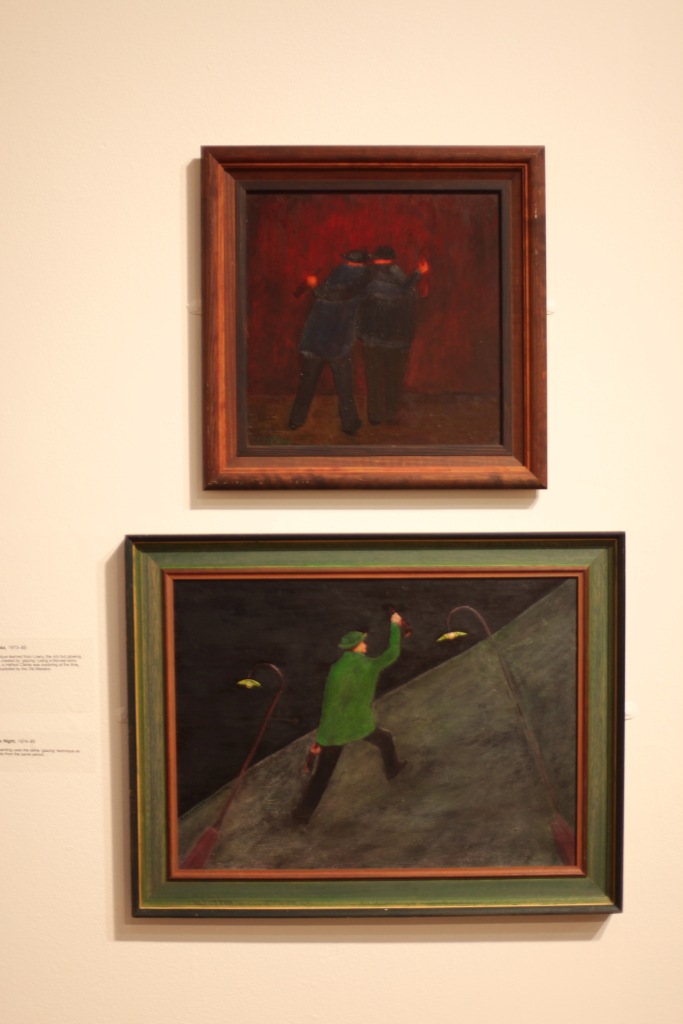
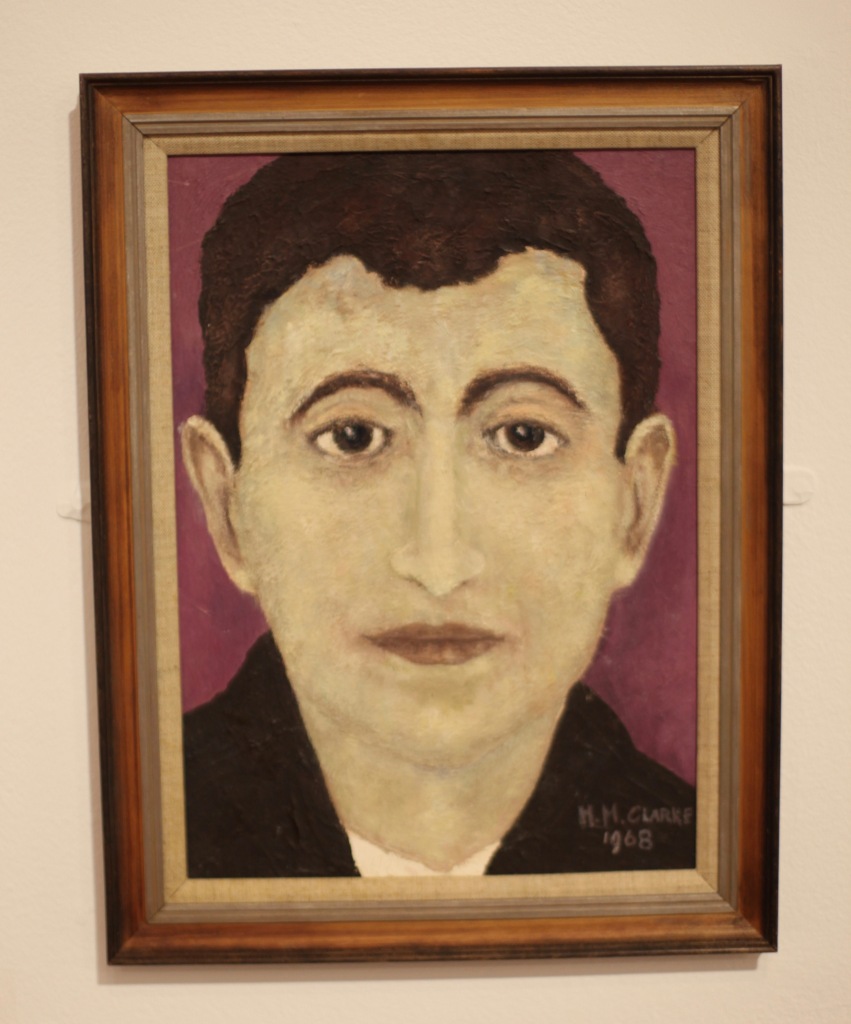
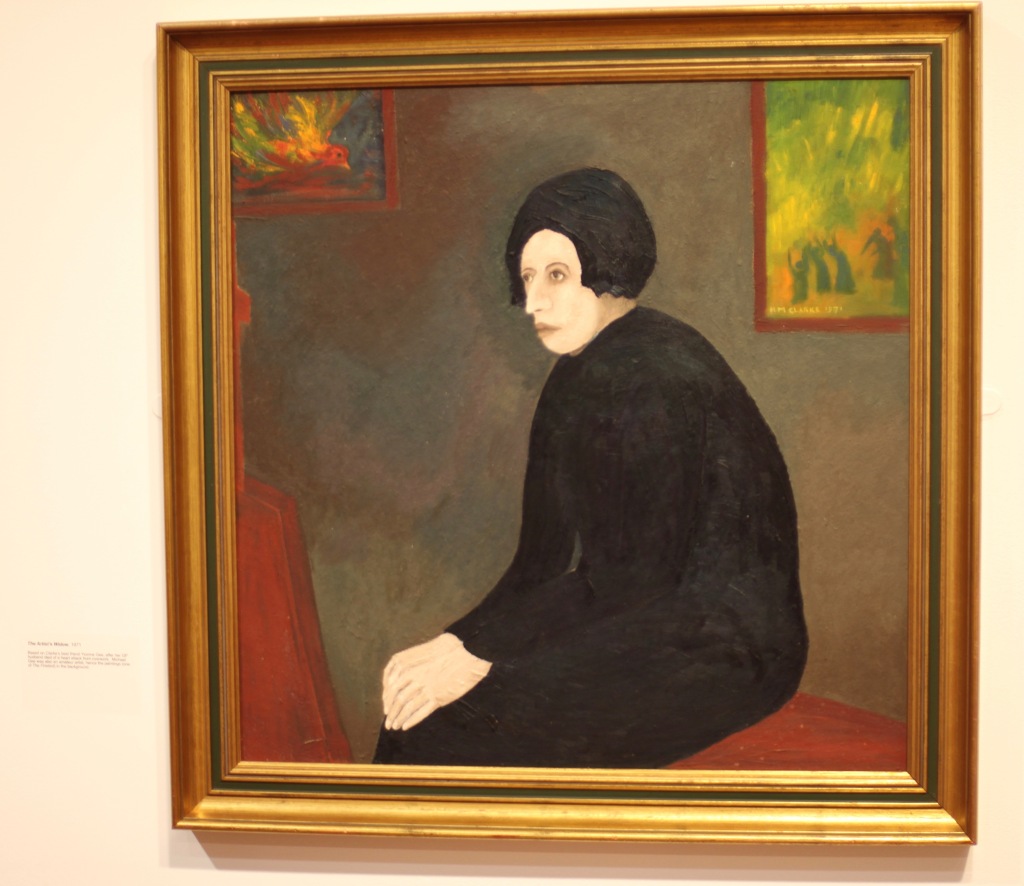
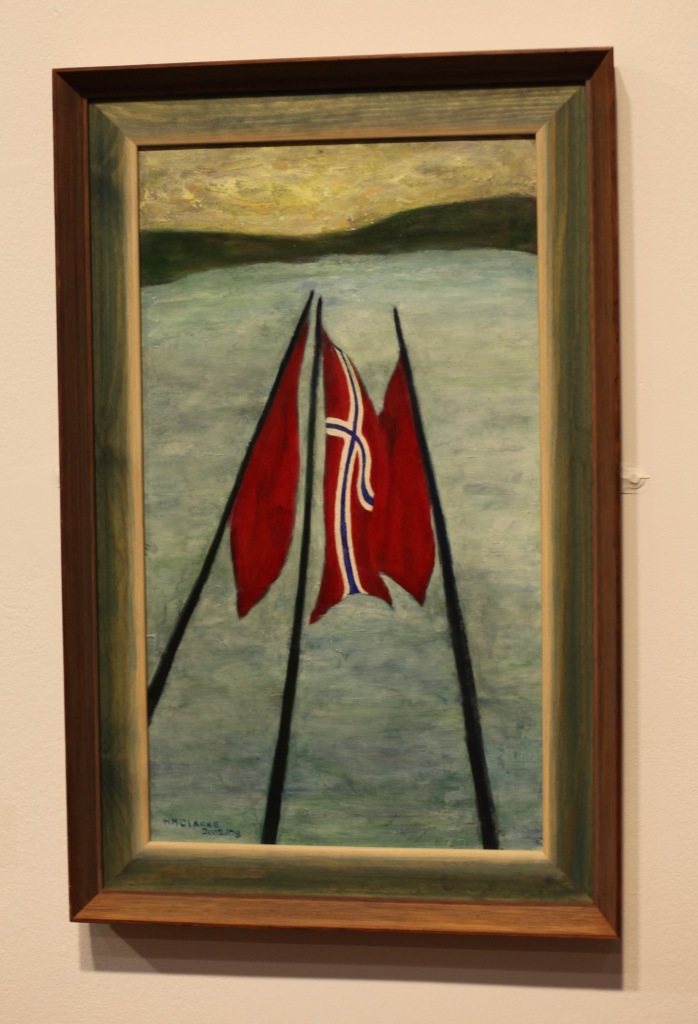
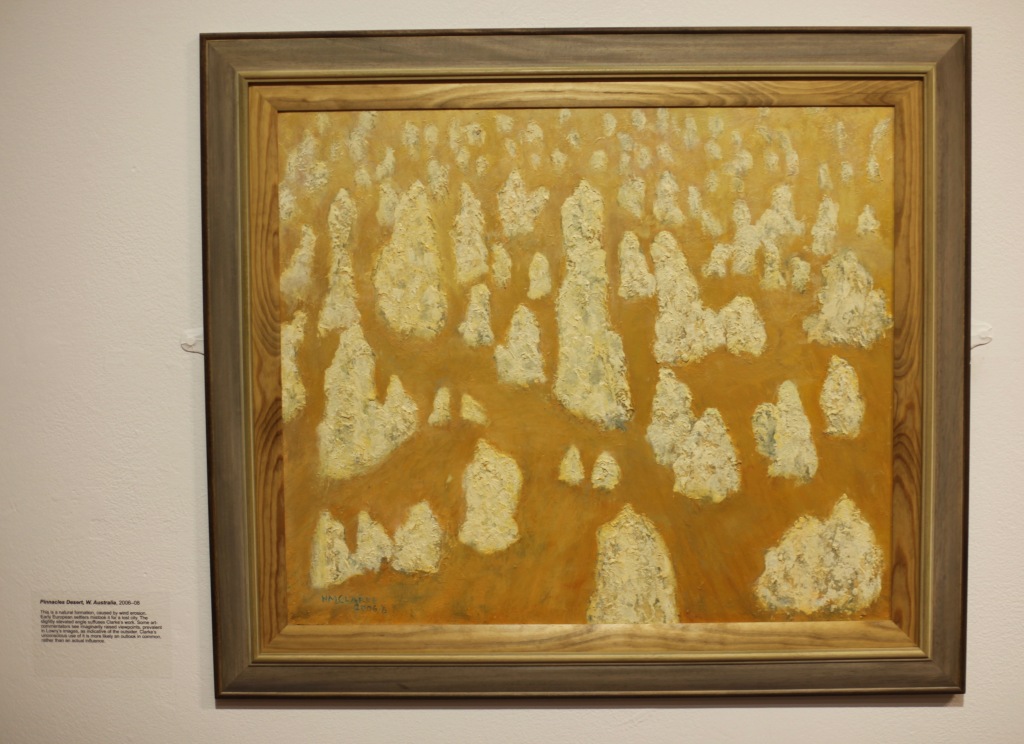
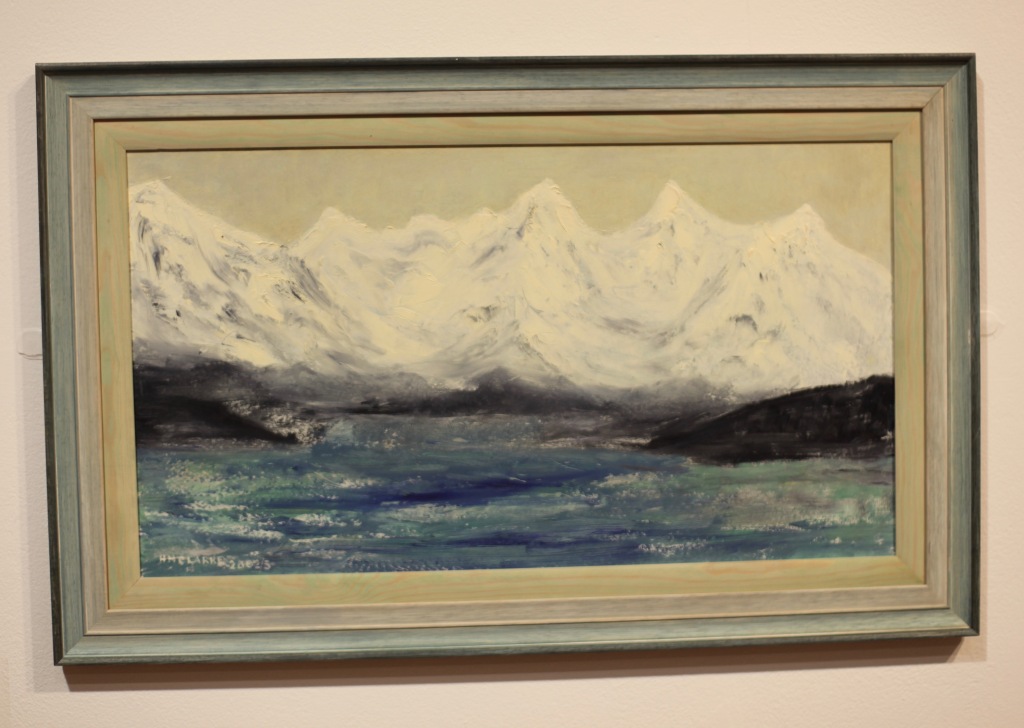
Although I haven’t really done full justice to the painter’s colours, I think readers will get the picture from this selection of prolific creativity spanning such a long, active, life. The exhibition was so well attended that it was not possible to photograph all the labels without intruding on visitors’ privacy. Unfortunately there was no catalogue, but Margery’s son Paul may have the time to offer supplementary detail. (Please see Paul’s invaluable series of comments below, for which I am most grateful)
Rachel Adams a photographer covering the event for the Southampton Echo, was kind enough to duplicate one of her poses of Margery and two friends with my camera.
Afterwards we dined at BrewHouse & Kitchen microbrewery and restaurant in Highfield, Southampton. This large establishment was very full. It was a good thing that Elizabeth had booked a table. Dutch, Belgian, and English beers were consumed by my sister, Jackie, and me respectively. My main meal was spicy cajun gumbo served with long grain rice and the addition of a few of the chips provided with the ladies’ special burgers. We all enjoyed magnificent sundaes which would ideally have taken a month in which to eat them.
We are quite optimistic that a large number of further buckets of water applied by Jackie this morning has finally cleared our unsavoury septic tank pipes.
This afternoon we took two large orange bags of rooted bamboo to the Efford Recycling Centre. Now we have no excuse for filling more green refuse, which we will first have to cut.
Our dinner this evening was enjoyed at Daniels Fish and chip restaurant in Highcliffe. We both chose cod and chips. Jackie supplemented hers with mushy peas and mozarella sticks; my addition was pickled onions.

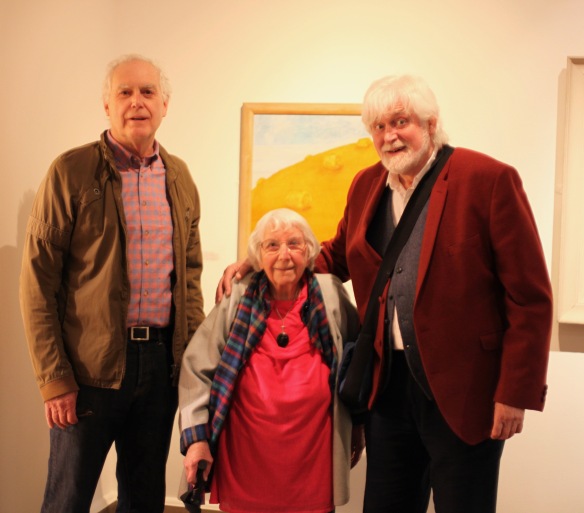
Was starting to worry when no post appeared 🙂 Glad to know that all’s well; even the septic tank 🙂
Many thanks Mary, especially for your concern. Sorry to have cause alarm.
That must be an issue with a daily blog! No chance to be off sick…
Thanks, Paul
I will take time several times to wander through the gallery and really absorb these pictures. They feel worthy of more than a cursory glance – in fact I think that might be rather insulting.
Very many thanks, Osyth. It was particularly good for me to see Margery’s progression over the years.
Thanks for sharing your trip to the gallery, Derek. Really enjoyed her work. Such talent!
We’ve recently returned from 3 weeks in Tasmania and with your love of food, you’d really enjoy it there. All but two of the places we ate at, really took care with out meals and produced something memorable. This, unfortunately, can be a bit of a problem when you’re travelling and get can’t get back. I’ve written up much of our trip and posted some photos. There was cheese, wine, cider and chocolate tasting and breathtaking scenery. Heaven!
xx Rowena
Thanks very much, Rowena
She’s very talented!
True, a marie, thank you.
Oh what a delight.. not only to see these beautful paintings, but to see the Wonderful Artist, your friend. And Happy Celebrations to Hilda Margery Clarke, in her 90th Year… Excellent and well done.. Her exhibition I am sure is a huge success..
Many thanks Derrick for sharing Hilda with us.. <3
Thanks very much, Sue.
Since I can’t split the computer screen to view images and add comments at the same time, I’ll have to doa few at a time. The first five are all from one wall, in a row,a particularly effective ‘hang’. I thought.
#5 was painted overnight (that’s truly remarkable speed, by HMC’s standards) on new of the death of a friend’s sister. Called “The Vision”, the face, which doesn’t resemble her very much, appeared vividly to Margery in a dream.
#1 is a quasi-portrait of Lowry, reflecting how she thought he felt, not what he looked like. When he saw this afer lloking at some of ther other work, and having not been forewarned of its content, nor even that it was about him, he said “How do you know I feel like that?”. Odd insight.
The back view of the Nun is from the same period, a time when this was an obsessive subject, mostly back views. She had a feelng they were following her about (and we did have a convent up the road from here), but they have a more sinister undertone than the real people. Hooded figures are an inspiration from a small image of her grandfather’s of a cowled monk meditating, with his head bowed.
As Derrick says, the colours don’t reproduce perfectly: the creamy one is white on white, tackling the painterly challenge of depicting a void, which she solved by using smooth and textured paint for definition. There are five variants of it, an unsually high number for a HMC theme.
The white figure on black is a imaginary reaction of impotent frustration at some issue she can’t easily recall now.
Despite the parallels of approach, the four figures appeared over a span of about 35 years.
Very many thanks, Paul. I am adding a not to my text alerting readers to this important information.
I’ll put up some more about the others, later.
Thanks
I ought to mention that the relative scale of the works doesn’t show up in this photo-gallery. The largest is “Unaided”, the white figure on black, about 25″ / 65cm sq. The smallest is “The Vision”, abut 8″ × 10″ / 20 × 25cm.
Good addition, Paul. My alert in bold parenthesis refers to your comments in the plural. 🙂
Remarkable woman, creativity never ages.
I think that the two pieces of the men with lights are museum worthy. Entitled: Drunks; I think they are fascinating. The meaning of the paintings can be interpreted in many ways if one didn’t know the title. Knowing the title takes the viewer to see the scene from inside the mind of the inebriated which is pure creativity.
That’s an interesting insight: I meant to add in my comment on them that the glazing technique was common among the Old Masters: it’s one of the things that gives their work that old look (another is that they ARE old, of course!) It’s an effect that couldeasily have been lost in the days of amateurs being let loose among musuems’ collections to “clean” their works. The glaze could be ignorantly removed along with the layers of accumulated dirt.
And you’re right to invoke a creative imagination since, as far as I know my mother has never been drunk.
🙂
Lovely comment, Ginene. Thanks on behalf of Margery (and me).
You can see the Lowry influence on your friends amazing work! The face that appeared as a result of a dream is very different from the rest of the display isn’t it. Many thanks to Paul for adding in his insights – I’ll have to return tomorrow to read any more info he posts – it adds to the enjoyment of admiring the work! I love the title of her exhibition – the twinkle in her eye shining through!
You’re right about the different look (and feel) of the dream picture. A curator seeing it at our house mistook it for a Redon (look him up: quite an accolade).
I’d not heard of Redon – what a body of work! I’ll spend more time finding out about him, thank you for the intro. And a very real compliment to Marjorie’s dream picture!
I’m pleased you picked up on the brilliant title, Pauline. Paul’s analysis is an essential addition.
Of the next five, the one top left is called “Going, Going… “, showing two men at an auction (the auctioneer, with gavel, is behind the bench next to the left-hand man’s head), disputing over ownership of a work of art. Margery had encounters with many beady-eyed, money-obsessed antiques dealers, and didn’t think much of them, their outlook and their world. Added to the barb of the satire is the fact that it’s a religious image.
Being an idea perhaps better rendered in a cartoon, it perhaps doesn’t succeed in conveying its narrative without additional explanation: many people conclude that it shows two auction-helpers struggling to hold up for viewing a heavy artwork, though it is actually splitting apart at the top. Compositionally, the legs have to be where they are, but it makes the figures not off-balance enough to give the impression of pulling against the structure of the painting.
The technique uses glazing (an early essay of this in HMC’s output), where layers of thinned paint add richness to the colour and glow. The crimson background, the two figures and the painting itself are all thus treated. She was especially pleased with the golden glow of the religious painting.
A more mature application of the same technique is in the paintings of drunks, two in the same photo-image. Here the content is purely fun (and, er… definitely not from Margery’s experience).
The two churchmen about to disappear behind a wall is one of her vivid captures of a glimpse, at Peterborough Cathedral. Strong echoes of the figures on white grounds of 30 years earlier, that I described in my previous comment, the same subjects can lie dormant for a decade or more, until triggered by a sighting such as this.
The intensity comes from her having got back to the studio very soon afterwards, and painting the essence straight onto a board. She rarely sketches, believing the spontaneous energy that she’s after will get sapped by drawing it first. In that way, she’s not a planner, in the ‘traditonal’ “composition first” art-teaching rule.
Finally in this batch, the crowds carrying banners is a recalled imaginary recomposition of the Whit[suntide] Walks that the churches, Trades Unions and other social groups used to hold in the North of England. Banners have long provided HMC with subject matter, including some depictions of them collapsing, a sight she never witnessed (or heard of). Heavy symbolism, though?
The setting is a reimagined Manchester Town Hall (the soot-begrimed backdrop to the scene) facing Albert Square, though HMC has accidentally imported a statue his Queen, which must be from Victoria Gardens!
The parades came from parishes in many suburbs, some 10 miles plus distant, and would converge there. They are visible on the two side streets. This must be part of her memory of the Catholic parade (hers would have been C of E: they marched on different days to the Protestants!) because it shows a religious tableau, typical of their marches. The white figures (hooded, again, note) are the children and youth who were thus clothed, and given baskets of flowers to carry. HMC participated in these events herself. No longer held, they would cause the shutdown of the entire city centre on the day.
The painting is nearly 4 feet / 1.1m long.
Wonderful paintings, and it seems a wonderful art show, as well.
It sounds like a great day–lunch and septic problems solved, too!
Many thanks, Merril
I’ll skip the yellow one with the vertical texture for a moment, and describe the next two, of the head and the seated woman in black. The intensity of both is because they’re based on people close to her. Though not like him to look at, the head is based on Eric Meadus, the short-lived artist Margery befriended in the 60s and still promotes (who, I’m sure has had prior coverage in these pages). This captures the energized feel of his gaze and emotion, and is the most intense of a series of unflinching, face-on heads HMC was painting about 50 years ago. The front-on portrait motif is almost certainly a throwback to Lowry, who dealt with this subject, sometimes even more fiercely than this (check out “The Man with Red Eyes”), throughout his career.
The woman, titled “The Artist’s Widow” (in this context, “the” artist, might as easily have been “an” artist: the clichéd title “Portrait of the Artist” to mean of onesself doesn’t apply here) is HMC’s best friend, a Jewish lady she met while being a secretary before they were married. Yvonne married a doctor, who had a fatal heart attack from overwork, leaving her with a new-born and two other children to bring up. Of course, Michael was well-known HMC too, so this wasn’t just a reaction to observing the effects on her friend. As well as being a GP, he was a talented musician (as are all the family: their son is Jonathan Gee, the jazz pianist, and Michael’s father led the Maritza Players at Bournemouth Winter Gardens, which broadcast for the BBC for years, into the ?late 50s/?early 60s); he was also a painter, hence the works of art in the background, based on his paintings. Though I only noticed it for the first time* while preparing it for this exhibition, the crucifix-like shape at the far left (hardly the stuff of Jewish symbolism!) is his easel.
A low-level but recent collector of HMC’s work, thus familiar with her later output, who was also at the event Derrick describes herein, said that seeing this “blew him away”. (No surprise there, I think!)
This is another relatively large example of HMC’s work, about 1m./40″ square. The Head is about 12″ × 15″ / 30 × 40cm.
*You may well imagine that, at this size and power (and subject), this isn’t a picture for a dining-room wall! While preparing it, I noted the frame had no holes for screw-eyes (the commonest way of hanging paintings in a house), only for mirror-plates (typical of gallery hangings: I think it’s been exposed only twice, since 1971).
More marvellous information, Paul. I think that Artist’s Widow is my favaourite.
Lovely photos of the beautiful paintings. Her style is so full of personality that even I can recognise one of her works and this is only my second go round. Great additional information in the comments from Paul.
Many thanks, Oglach.
Thanks. You’re welcome.
And the last set, including the yellow one I skipped earlier: they’re all from HMC’s ‘sabbatical’ year, 2002, when she opted out from running “The First” Gallery (leaving me to do it). Meanwhile she went round the world in stages, starting at Ramsgate, on the Kent coast (that’s about as far east in England as you can go) but there are no pieces of that stay in the exhibition.
Before the year was half over, she’d also done the Norwegian Coastal Voyage cruise, which spawned the paintings of the flags, the mountains and the drummer band.
The flags are an invention but the sea, the light and the distant land are distilled from the Norwegian experience. In 2008, possibly before the flags were added (when it was just three masts almost meeting at one point), this just lost out to winning First Prize in Southampton City Art Gallery’s water-themed Open Exhibition.
The mountains are the Lyngen Alps, an extensive range running along the north Norway coast from where it turns eastward past Nordkyn. This is Midnight Sun country, which gave the alps a curious glow, which she doesn’t think she’s quite captured, though it works fine as a painting in its own terms (on her webpages, there’s a repro of a smaller version, which she feels does so, but its repro doesn’t reflect the look of the real painting as well as this one does).
The Bergen Drummers is a representation of the marching bands which rehearse in the town every week, noisily bringing the traffic to a grinding halt (all calmly accepted by the locals). The swirling movement of a crowd is something Lowry was a master of.
After a period at home, ‘laying in’ the bases of the paintings of images she’d seen so far (so that the painting, though sketchy, would re-trigger the vision when she came back to them ages later) she went off for three months in the Antipodes. The two you’ve chosen are both of extraordinary geological formations in Western Australia: the first being Wave Rock, looking like a sand-coloured breaker, about 100′ / 30m high, as if frozen in mid-surge (it’s actually eroded, not a lump of molten rock suddenly cooled). I think the tiny foreground figure may be a little small for the reality but, from the photos, it still looks mighty spectacular.
The other image is of The Pinnacles Desert (I have a feeling I’ve mentioned, and possibly linked to, it in a previous post a year or two back), which is a vast wind-eroded area in which even locals can get lost, which early Western settlers took to be an abandoned city. The high viewpoint, imagined in HMC’s case (though tourists can hire helicopters and planes to get a grasp of the scale of it), is a frequent element of her work, an aspect shared with Lowry (I’m so used to it, I don’t see it as exceptional). Art critics and psychologists consider it symboliic of ‘the outsider’, probably not an incorrect reading in Lowry’s or HMC’s case, but it’s totally unconscious. If you draw or describe from imagination, or recall dreams, revealing this elevated angle, you too may be alienated from those (people or places) around you.
Strewth, Derrick , don’t take any MORE photos, or I’ll be here all night!!! (as will your followers).
I should add that the picture “Bales” in the background of the portrait shot, is a typical subject, HMC responding to the surreal, sometimes anthropomorphic sense engendered by uncollected bales left in fields. I think the steep slope of the field in her painting is probably an invention, but aids the composition, and gives it a feel of movement. The other friend is Tim Robinson, a trained artist, and a paintings conservator by profession. At one time he ran (and possibly set up) the Sydeny branch of the advertising company Ogilvy-Mather.
Very many thanks, Paul. I’m slightly amending my alert in the post to draw attention to the fact that there are several sets of comments.
You appear rather large; perhaps too many chips?
Margery seems to be a very tiny, yet sprightly, well preserved, nonagenarian; in fact she looks a damned sight younger than I do!
Chips and lack of exercise due to dodgy knees, Brian. Margery does very well.
Might I suggest that with dodgy knees and a lack of exercise you give up the chips?
Now you have me wondering; with dodgy knees etc, who’s the bloke, who’s out and about, walking here, there and everywhere, taking numerous photographs for the pleasure of your followers?
You have to compare it with a mad sporting life, including running 60 miles a week into my 50s and walking 2/3 hours a day until a couple of years ago. Now Jackie drives me, and I wander about a bit.
Excuses, excuses 😈
These are fabulous paintings. I wish I could get to the show and spend time with them. I like the pic of you with Margery and thank Paul for his notes.
Many thanks, Lisa. Will do.
Oh, I LOVE the picture she painted that’s on the link you put it – It’s a crowd of happy people with balloons – so cool!
I will go back and read the commentary by Paul and look at the gallery tomorrow. – It looks like an amazing journey. – And did I see your camera bag in tow?
Thanks very much, Jodie. You did see my camera bag 🙂
Excellent!
The paintings and artwork of someone you know mean so much more than ones in museums, Derrick. I liked her pictures painted of people the best but enjoyed the Norwegian mountains, too. 🙂
So wonderful to see the photo of Margery. Beautiful paintings she did!
Many thanks, Amy.
Images are too beautiful ❤
Many thanks sudershana, especially for the extensive reading and comments
A perfect day!
It was, Micheline. Thank you.